Not so long ago Ridley Scott's Exodus: Gods and Kings debuted in theaters, whitewashed and all. Despite (or perhaps because of) the major controversy surrounding it, the film didn't seem to make much of an impression and has already faded from most people's minds. But it doesn't look like Hollywood's done with ancient Egypt yet and there's talk that Angelina Jolie's pet project Cleopatra might actually be moving forward, which means we'll be getting another (likely unrepresentative) iteration of the fabled kingdom again. But why focus on Egypt? After all, there's a whole continent to explore.
One thing I observed when I wrote my article about Egyptians' race a couple of months ago is that not very many people actually know very much about African history. This isn't altogether surprising: our perception of history has a decidedly Eurocentric slant and out of all the continents, Africa is perhaps the most sorely neglected (with the possible exception of Australia/Oceania). But it is a bit disappointing, especially since, as I think you'll see, there's plenty of interesting stories to tell about Africa that don't involve pharaohs or pyramids.
What I've gathered here isn't even an exhaustive list: these are just some of the five best-known and most recognizable states from pre-modern Africa. I'm leaving plenty of stuff out, which in of itself should tell you how much Africa's past has to offer. Still, I think it's a representative sample and it provides a broad sweep of Africa's history across five different regions and over three millennia.
1) The Kingdom of Aksum
A lot of people in the United States have heard, at least obliquely, of the Rastafari movement. A smaller number know that Rastafarians, in addition to helping to popularize reggae music, worship Haile Selassie I, the last Emperor of Ethiopia, as an incarnation of God and the messiah. Fewer still know that one of the reasons for Haile Selassie's popularity among the 20th century Afrocentrist movement that gave rise to Rastafaris was that Ethiopia was the only country in Africa free of European domination. In the eyes of blacks throughout the Western Hemisphere, Haile Selassie's exuberant coronation, which was attended by world leaders from around the world, was a potent symbol of their own yearning for political freedom and representation on the world stage.
If Ethiopia's defiance in the face of that weren't enough the Ethiopian royalty claimed direct descent from the Biblical House of David through an affair between King Solomon and the Queen of Sheba, lending the country a certain mystique that was undeniably attractive to black religious leaders looking to separate their faith from the white-filled narratives of European Christianity. Contributing to this attraction was the fact that the Ethiopian Empire featured its own, separate branch of the Christian faith, an offshoot of the Coptic Church based out of Egypt.
In truth, while there's reason to be skeptical of the idea that Haile Selassie actually was descended from King David, the claim may not be without some basis in historical fact. The Solomonic dynasty of which Haile Selassie was a member was founded in the 13th century by Yekuno Amlak, an Amhara noble, who claimed descent from the ancient kings of Aksum, an Iron Age dynasty that existed within much of what is now Ethiopia. In his claim, Yekuno also perpetuated the legend that Aksum was founded by the bastard son of King Solomon and the Queen of Sheba and while he may well have been fibbing about his own ancestry (like many nascent kings), his assertion that Aksum had an ancient connection to Israel may actually have been true.
No one knows precisely how the Kingdom of Aksum came into being; the Ge'ez script in which ancient Ethiopian records are written only became widespread after the kingdom was well-established and most accounts of its early history are from foreign sources, rather than the Aksumites themselves. Most historians do, however, believe Aksum rose out of an earlier kingdom, D'mt, probably with some influence from the Sabaeans, a people from modern Yemen in southern Arabia. The Sabaeans, as it so happens, are widely believed by modern historians to be the same kingdom referred to in the Bible as "Sheba."
Like modern Ethiopians, the Aksumites spoke a predominantly Semitic language distantly related to modern Arabic or Hebrew, which for some time historians thought was descended from the Sabaean language (though this is no longer widely believed). The connections to Israel don't stop there though. It's long been known to anthropologists that Ethiopia has a large population of indigenous Jews, commonly known as the Beta Israel, but it was only recently that genetic analyses evidenced what the Beta Israel themselves had long-claimed, that they were descended from a population of ancient Jews in Ethiopia dating back at least two millennia, rather than later converts. Which itself, along with the Sabaean connection, lends the Solomonic dynasty's claim of Biblical descent considerably more credit than might initially be assumed.
But regardless of whether or not the ancient Kings of Aksum had some connection to ancient Israel, their achievements are undeniable. At its height, around the 3rd and 4th centuries AD, Aksum had brought much of modern Ethiopia as well as Yemen, Eritrea, Djibouti, and Sudan under its control, along with smaller portions of Egypt and Saudi Arabia and was regarded as one of the four great empires of the known world (the remainder of which were Persia, the Roman Empire, and ancient China). A major center of trade, Aksum was an important part of the Indian Ocean sea trade that linked Egypt to India, China, and Southeast Asa, controlling the Red Sea through which much of said trade was conducted.
Aksum was also one of the first countries in the world to convert to Christianity, adopting the new religion at around the same time as the Romans and the Armenians (the two other main claimants). The Aksumite kings took their faith quite seriously and considered the welfare of Christians in both Africa and Arabia their responsibility, extending their protection to those experiencing religious persecution. Ethiopia would remain one of Christianity's principal centers for more than a millennium and its status as the sole holdout against Islam's spread throughout East Africa likely influenced the Prester John myth so popular in Medieval Europe.
The Aksumite dominion over East Africa and the Red Sea began to fade as the Umayyad Caliphate extended its control over North Africa and the Arabian Peninsula, isolating Aksum from the Mediterranean. The economic decline was followed by political fragmentation, eventually resulting in the overthrow of Aksum by the Jewish queen Yodit in the 10th century. However, while the political state known as Aksum came to an end, Aksum's cultural legacy would survive into the present day, in the form of the Ethiopian Orthodox Church, the Amhara people, and the Solomonic dynasty's claims to descent from ancient Judea. And that certainly makes them an empire worth remembering.
2) The Carthaginians
You may have heard of the Carthaginians (also known as the Punics). If your middle school history course was anything like mine, you learned of them briefly during your school's rundown on ancient Rome, which detailed in short the role of Carthage as Rome's adversary in the Punic Wars. You may even have heard of Hannibal's march across the Italian Alps with war elephants or how the Roman Republic never rested easy until his death, long after they defeated him. It may not have occurred to you, however, that the Carthaginians were African.
Mind you, they weren't originally African. Carthage, a city whose name literally means "New City," was founded around the 8th century BC by Phoenician colonists. The Phoenicians were a Semitic-speaking, seafaring people from modern Lebanon who were pretty incredible in their own right but unlike the Carthaginians never actually established any empires and were primarily organized into autonomous city-states (much like ancient Greece). According to ancient legend Carthage was founded when Dido, a princess of the Phoenician city-state of Tyre, fled from her homeland to Africa with her allies after a political struggle with her brother the king.
Regardless of whether the legend is true or not, evidence suggests the initial founding population of Carthage, like that of most Phoenician colonies, was fairly small and it is unlikely the majority of Carthage's subjects were Phoenician in origin. Indeed, early accounts of Carthage's history note both close trading partnerships and political marriages with the local inhabitants, who were primarily Tamazight-speaking Numidians. Carthage's relationship with the Numidians was always somewhat precarious—sometimes they were enemies, sometimes they were allies—but both had an undeniable impact on one another. By the time Carthage emerged as Rome's rival for control of the western Mediterranean, the Carthaginians were arguably as African as they were Phoenician.
Within a few centuries Carthage emerged as Phoenicia's most successful colony by far, owing probably to it's strategic location guarding the pass between Sicily and North Africa. Carthage emerged as a prime hub for trade between both sides of the Mediterranean, establishing close ties with the Tartessians of modern Spain, the Celtic Gauls, the Etruscans of northern Italy, and, of course, their own homeland in the Levant. There's even evidence to suggest the Carthaginiansestablished contact with cultures in West Africa, possibly as distant from Carthage as Gambia or further. The Carthaginian economy was based in dyes, textiles, and other luxury goods, as well as the buying and selling of commodities across the Mediterranean.
The wealth the Carthaginians gathered from trades would allow them to eventually break free of their ties to Phoenicia, becoming fully independent and forming their own colonies throughout the western Mediterranean. The most successful of these were Carthage's colonies in Spain (which apparently may mean "land of the rabbits" in the Carthaginian language), which included among their number the modern day city of Cartagena, which was originally named Carthage itself. The Carthaginians would also establish colonies in western Sicily, which would be the principal cause of their eventual conflicts with Rome.
Like Rome, Carthage was a former monarchy that eventually gave way to a republic. In 483 BC, after suffering a devastating defeat by the Syracusan army at Himera, the Kings of Carthage agreed to hand over most of their power to an oligarchical Council of Elders comparable to Rome's Senate. By the end of 4th century BC the Council of Elders had taken complete control of the city's government and the last of the kings was deposed, leading to a fully republican government. The change brought Carthage a deal of respect from both the Greeks and the Romans, who as a rule preferred republican systems to monarchical ones.
Relations between Rome and Carthage took a turn for the worst following the Pyrrhic War. Though the two had fought together during the conflict, they quickly began to compete for control of the Mediterranean in general and Sicily more specifically. In 241 BC the Romans forced the Carthaginians from Sicily and incurred upon them a heavy indemnity. This in turn led to the second, more famous war between Rome and Carthage when Hannibal Barca, a Carthaginian aristocrat rose an army of Carthaginians, Iberians, and Gauls and marched them across the Alps, laying waste to the Italian countryside. Without siege equipment, however, Hannibal was unable to capture Rome and he was eventually defeated, ending Carthage's reign as a major power. Half a century later, the Romans sacked Carthage and burned it to the ground, slaying or enslaving most of the inhabitants.
Although Carthage was destroyed, its legacy remained in North Africa. For many centuries afterward Punic, the Carthaginian language, was the lingua franca of northern Africa. Many notable persons within the Roman Empire, including Septimus Severus, a Roman emperor, and St. Augustine of Hippo, an early Christian leader, spoke and wrote Punic as their first language. Although scholars are not sure when Punic culture disappeared entirely from North Africa, it may have been during the 8th century, when the Arabs (who also spoke a Semitic language) conquered the region, introducing a sufficiently similar culture to the area that was able to absorb what remained of ancient Carthage.
3) The Kingdom of Kongo
Today, when you talk about the Congo, one of the first things you'll need to do is clarify whichCongo you're talking about. Do you mean the Democratic Republic of the Congo (formerly Zaire)? Or do you mean the Republic of the Congo? It may seem confusing that both countries share the same name (and aren't even distinguished by a geographic qualifier like South Korea and North Korea) but their name derives from the fact that both were at one point part of the Kingdom of Kongo, before the African kingdom was divided between the French, Portuguese, and Belgians during the 19th century "scramble for Africa." The DRC derives from the Belgian portion, the RoC from the French section, while Angola makes up the Portuguese territory.
As is often the case with pre-literate societies, the origins of the Kongolese Kingdom are somewhat uncertain. According to oral traditions later recorded by the Portuguese, the kingdom was founded by a Kikongo warrior named Luken lua Nimi raised an army within the modern DRC and raised it against the Kingdom of Mwene. Luken established his kingdom at the foot of Mongo dia Kongo, a mountain upon which rests the present day city of M'banza-Kongo in Angola. Under his descendants, Luken's empire eventually stretched to encompass much of Angola, the DRC, and the RoC, dominating central Africa for centuries.
The Kongolese established a quasi-feudal system over their subjects, where the lowest unit of administration was the libata or local village, which in turn was administered by regional aristocrats known as mwene, who in turn owed their allegiance to the king. The Kongolese also held suzerainty over a number of semi-autonomous vassal kingdoms, which the king of Kongo listed among his official titles. The king was himself chosen by an election held among the mwene, though he was for much of Kongo's history a descendant of Luken, lending a certainly hereditary quality to the title.
The Kongolese economy was fueled by trade up and down the central rivers of Africa, dealing primarily in ivory, copperware, textiles, and pottery, though slaves and rubber both eventually became premium exports. The riches gained from these and other trades helped the Kongolese expand and enrich their capital, which by the time of their first contact with Europe was likely 130,000 square kilometers in size and had as many as half a million inhabitants. After the kingdom's conversion to Christianity, it also featured an enormous cathedral, though by many to be the oldest church in Africa south of Ethiopia.
The Kingdom of Kongo was actually known to Europeans for several centuries before its forcible partition. The Portuguese first encountered the Kongo during their exploration of the African coastline in the 15th century and the navigator Diogo Cão actually organized a diplomatic mission as early as the 1480s. The Kongolese nobility were received with honor and established trade relations with the Portuguese shortly thereafter and allowed the established of religious missions by the Roman Catholic Church. From then until the Portuguese's betrayal in the 19th century, relations between the two countries were largely peaceable and even friendly.
They weren't without a sinister side, however. While the Kongolese' acceptance of trade relations and Christianity from the Portuguese may seem relatively benign, the Kongolese were also (like many West and Central African kingdoms of the time) more than willing to engage in the slave trade as well, selling war captives and several of their own subjects to the Portuguese and the Dutch. Indeed, King Diogo tried to have it arranged so the Portuguese could only purchase slaves from his kingdom. That's not to say the Kongolese did not have disagreement with the Portuguese slave trade; they wanted it carried out according to their laws and were primarily interested in using it to strengthen their own power at the expense of their neighbors. But they were largely accepting of the trade's legality and profited greatly from it.
Relations between the Kongolese and Portuguese broke down for the first time in 1622, when the Portuguese formed an alliance with the cannibalistic Imbangala against a Kongolese vassal. This and several other conflicts with European powers would weaken the Kongolese regime, though during the 18th century, the kingdom would experience a brief resurgence and it was not until the 19th that the kingdom would be subjected to European rule entirely.
Eventually, in 1884, the Portuguese government called the rulers of Europe to Berlin over their concerns about Belgian and French encroachments onto the Kingdom of Kongo, which at that point they considered their territory. The Portuguese were able to convince the Belgians and the French to split the kingdom with them, on the condition that the Portuguese forcibly occupy their portion. Additionally, the gathered powers agreed to split the rest of Africa between themselves, leading to the colonial period of not just Kongo's history but all of Africa's.
Although the Kingdom of Kongo's history ended in betrayal and occupation, its legacy lives on. Not only are two countries named for it, but so is the Congo River, the world's deepest river and the second largest by volume. The Kikongo language, spoken by the elite of Kongo, remains one of the official languages of Angola, as well as a regional language in the Democratic Republic of the Congo and the Republic of Congo. Lastly (and more lamentably), the Kingdom of Kongo was the greatest source of slaves for the Atlantic slave trade, making it one of the principal mother nations for the modern black populations of the Americas and the Caribbean, particularly in Brazil, the largest of Portugal's former colonies.
4) The Mali Empire
It would be negligent to talk about the great civilizations of Africa without mentioning the Mali Empire. One of the richest and most powerful states of pre-colonial Africa, Mali was a wonder in its own time, respected and admired by the great powers of North Africa and the Middle East and known as a center of learning and wealth. It is perhaps best known today for the city of Timbuktu, one of the empire's many trading centers and a place which even today provokes a sense of awe and mystery among Europeans (a survey of Britons in 2006 found that 66% thought it was a mythical place like Shangri-la).
According to the Epic of Sundiata, an oral history of Mali that would later be recorded by French scholars during the colonial period of Mali's history, the empire arose out of what was originally a confederation of Mandinka kingdoms known as the Manden Kurufaba, located in what is now modern Mali and Guinea. During the early 13th century, the king of one these minor states had a crippled son named Sundiata Keita by a secondary wife. Upon his death, Sundiata, who was his father's favored son but his second by birth, was usurped by his half-brother Dankaran Touman. Fearful for their lives, Sundiata and his mother fled their home and went into exile within the nearby Mema kingdom.
Among the Mema Sundiata fought alongside them in several of theirs wars, acquiring a reputation—despite his disability—as a formidable warrior. So popular did he become that Sundiata eventually rose to become the king of Mema's new heir. Meanwhile the king of Sosso, Soumaoro Kanté, had deposed Sundiata's brother and conquered his kingdom. Utilizing his new alliance, Sundiata returned home to liberate his people, defeating Soumaoro and unifying the Mandinka kingdoms into one empire. Among several new titles (including the royal title ofmansa), Sundiata was proclaimed the "Lion King" and at least one scholar has argued that Sundata's tale is, along with Hamlet, one of the inspirations for Disney's The Lion King.
Under Sundiata's heirs the Mali Empire would grow large and prosperous, fueled in large part by its immense supply of gold, which may have amounted to half of Africa and Eurasia's supplies before the colonization of the Americas. Mali also had trade ties throughout most of West and North Africa, connecting it not only to other neighboring kingdoms but to the Arab world, from whom the Mali would important Islam, which soon became the country's primary religion. In addition to gold, Mali also traded heavily in cotton and salt, both of which were extremely valuable in the arid regions of the Sahel and Sahara.
The golden age of Mali was arguably reached during the reign of Sundiata's grandnephew, Musa I (also known as Mansa Musa). By the time of Musa's ascension to the throne, the Mali Empire already ruled over most of modern Mali and Guinea, as well as a substantial portion of Mauritania, but Musa would extend the empire's reach still further into northern Mali and Senegal, bringing the city of Timbuktu under Malian rule. In addition to his military works, Musa was also renowned for both his wealth and his piety. During his reign, numerous mosques and madrasas (Islamic schools) were constructed throughout the empire and Mali organized an extravagant pilgrimage to the holy city of Mecca as part of the Islamic tradition of hajj,reportedly spending so much wealth on his journey that he massively inflated the economies of Egypt and Arabia, devaluing gold and other commodities.
The Mali Empire survived Musa for many more centuries and would remain one of the pillars of the Islamic world well into the 14th century. However, during the 15th, the Mali would begin to experience competition from other local kingdoms, the greatest of which would eventually become the Songhai Empire, which was originally a Mali vassal before it broke free of the mansa's rule. In 1468, the Songhai seized control of Timbuktu, signaling the end of Mali's reign as a great power in the region. Mali would persist for another century and a half before finally disintegrating into a number of smaller kingdoms sometime around 1600.
Today, the Mali Empire's legacy is visible throughout most of West Africa. The cities of Timbuktu and Djenné, two of the empire's greatest economic centers, remain cultural touchstones for the region and were both designated by UNESCO as World Heritage Sites, signifying their significance to Mali's history. The name Mali itself is retained as the name for one of the modern countries whose territory the empire shared and the Epic of Sundiata is widely regarded as one of the most significant pieces of West African literature in the world. Indeed, it would probably not be incorrect to say that of all the civilizations listed here, Mali may be the one whose legacy is most secure.
5) The Kingdom of Zimbabwe
Of all the civilizations mentioned here, the Kingdom of Zimbabwe is easily the most elusive. Leaving behind no written records and having collapsed nearly a century before the first Europeans reached its territory, Zimbabwe is only known to us from local oral traditions and ancient ruins. Even today, very little about the kingdom is known with absolute certainty. Nonetheless, its impact on Southern Africa was enormous and it's as deserving of a mention as any of the others I've listed.
The Kingdom of Zimbabwe probably emerged from an earlier kingdom known as Mapungubwe, which was based out of what is now South Africa. Mapungubwe, which existed between the 11th and 13th centuries, is thought by many archaeologists to be the first complex hierarchical society in Southern Africa, with a landed elite ruling over a larger group of farmers. The transformation of the region was likely triggered by the expansion of the Bantu cultures, which arrived in Southern Africa from West Africa sometime during the 1st millennium AD, bringing with them agriculture and iron metallurgy.
Eventually, the Mapungubwe culture collapsed, for unknown reasons and the center of power shifted northeastward toward modern Zimbabwe, around 1220. There, the new rulers of the region established a massive stone citadel known as Great Zimbabwe, from which both the kingdom and the modern country take their name (Zimbabwe means "great stone houses" in the Shona language). From this capital, the Kingdom of Zimbabwe extended its rule into parts of modern Zimbabwe, Mozambique, Botswana, and South Africa, dominating the region for two centuries.
The economy of Zimbabwe was based primarily on its agricultural output but it also derived a large amount of wealth from its massive stocks of gold and ivory, which it used to establish trade connections with the seafaring city-states of East Africa (which were themselves linked to the Middle East and India). Archaeological finds have established that the Kingdom of Zimbabwe imported a large number of goods from these contacts, indicating a healthy exchange over the kingdom's lifespan. Unlike many African states during the period, however, Zimbabwe does not seem to have adopted Islam as its religion and when Europeans reached the region centuries later, the local people still practiced their traditional, pre-Abrahamic beliefs, a mix of animism and monotheism that venerated both a supreme deity and ancestral spirits.
At some point, the Kingdom of Zimbabwe entered into a decay, much like the Mapungubwe culture before it and power shifted further north to Zvongombe, where the Kingdom of Mutapa was established around 1430. It was this culture which Portuguese traders would eventually contact in the 16th century and from whom both the modern states of Mozambique and Zimbabwe claim much of their heritage. Mutapa was eventually subjugated by the Portuguese over a period of several centuries, leading to the introduction of colonial rule.
For centuries, European explorers and colonialists were baffled by the sophistication of the stone ruins at Great Zimbabwe, which many of them considered beyond the ability of the natives to construct. Looking for another explanation, early historians and archaeologists suggested any number of implausible solutions, such as the idea that they were constructed by an Arab state or even King Solomon of Israel. It was not until the 1950s that scholars began to accept the idea that Great Zimbabwe had indeed been built by a local people, likely the Bantu-speaking Shona still located in modern Zimbabwe. Such was the weight of racism in early anthropology, which denied even the obvious when it conflicted with ideas of European supremacy and African primitivism.

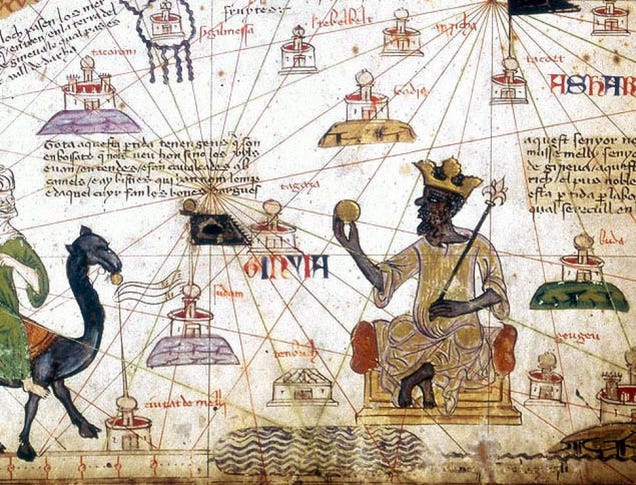
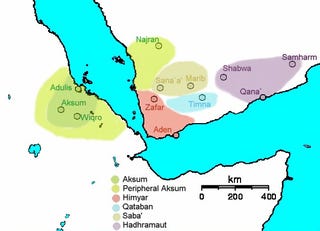
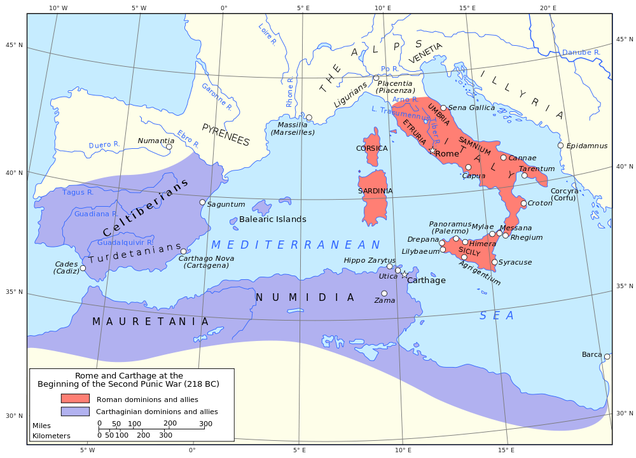


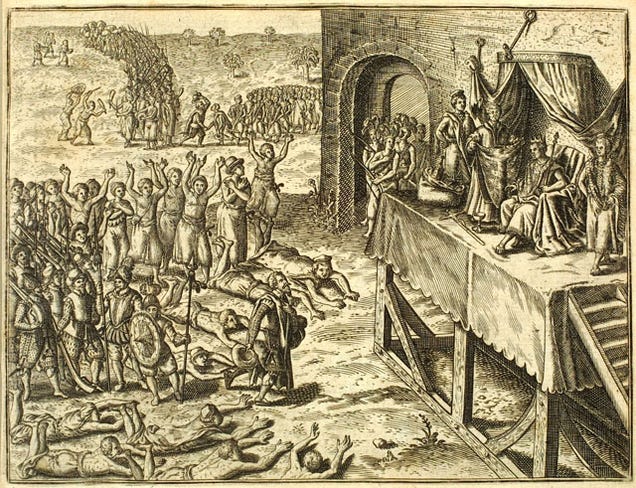
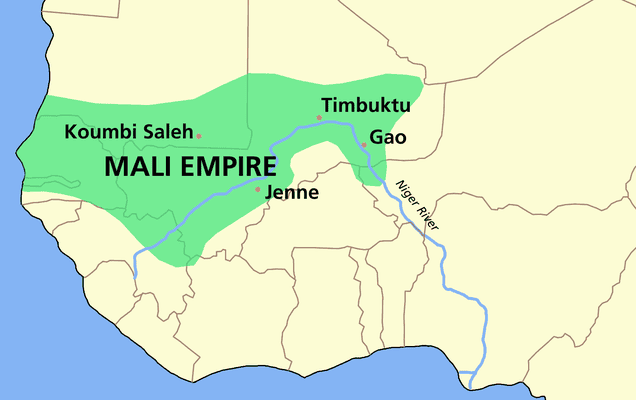
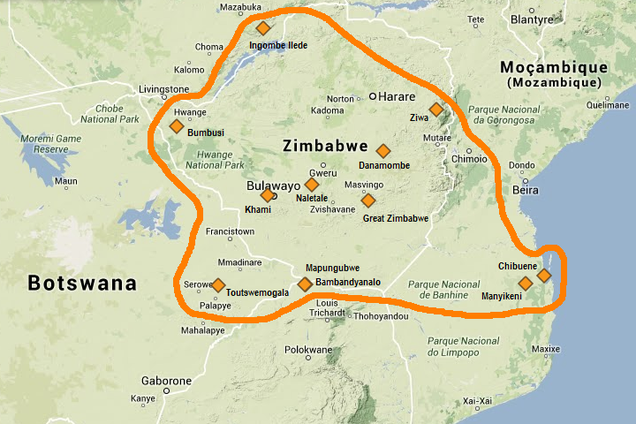
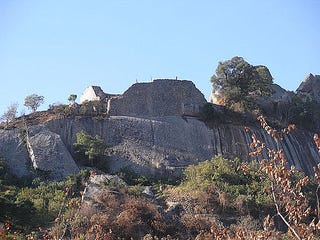
No comments:
Post a Comment